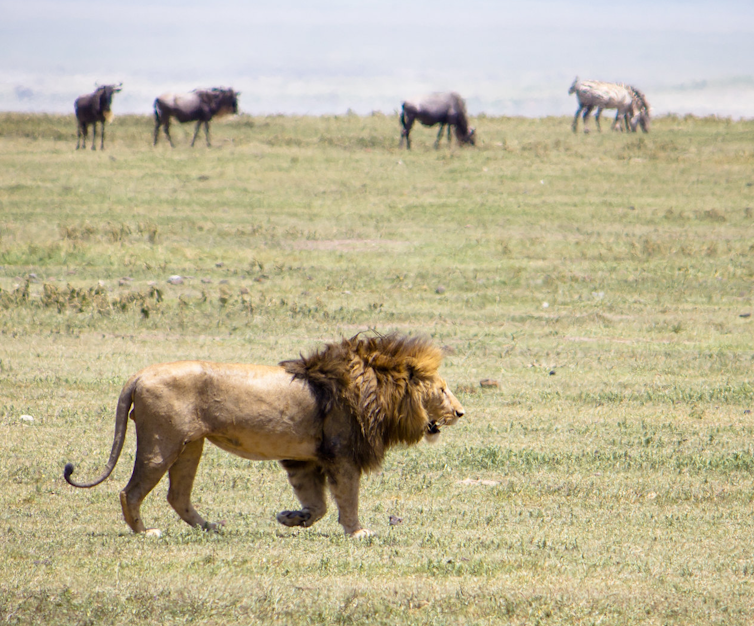Lucian K. Truscott IV, Salon
March 05, 2022

Ukraine Rebel troops (AFP)
Kherson, a port city in the south of Ukraine, has fallen to Russian forces. It is an important port on the Dnieper River delta, and military strategists say that now that the Russians have taken Kherson, they can turn their attention to Odessa to the west, Ukraine's third largest city, a major port and a center of tourism on the Black Sea.
This article first appeared in Salon.
Meanwhile to the north, Ukraine's two largest cities, Kyiv and Kharkiv, remain under siege, with Russian forces targeting civilian neighborhoods indiscriminately. According to the UN, the number of civilians killed by Russian bombs and shelling is approaching 1,000, but judging from what I've seen in television coverage, it's likely much higher. A video on the website of the New York Times on Thursday showed what appear to be projectiles fired from a Russian rocket launcher hitting a civilian neighborhood in Chernihiv, a city to the east and north of Kyiv. You can see civilian pedestrians on the street near where the rockets were about to hit, and then you can't see them. The video has red circles picking out six rocket warheads as they fly in and strike the street and surrounding buildings.
I've also seen a video showing cluster munitions striking an apartment complex in Kharkiv. Cluster bombs are anti-personnel weapons that are banned under international agreements that Russia and the U.S., among others, have not signed. There are no concentrations of Ukrainian army forces on battlefields in this war against which cluster munitions could legitimately be used. The fact that these bombs are landing in neighborhoods populated entirely by civilians suggests that Russian forces have been issued the munitions specifically to target civilian human beings.
Numerous photographs emerged this week of extensive damage to civilian neighborhoods in various cities in Ukraine showing the faces of apartment complexes entirely blown off, fires in what appear to be office and apartment buildings, and other damage to civilian areas.
What does it mean to "take" a city like Kyiv or Kharkiv or Kherson? Russian military commanders have clearly been ordered to "take" these Ukrainian population centers in the process of conquering and occupying the entire country. But from video footage of this war — and from the evidence of every other war in history — "taking" a city pretty much means destroying it, as in the famous GI saying that became a symbol of the Vietnam War: "We had to destroy the village in order to save it."
What is the purpose of an aggressor "taking" a city, or even the entire country, if in the process you are destroying the thing you say you want? If you are the one who ordered the invasion — in this case, Vladimir Putin — what do you do after you have "taken" a country you have destroyed, and how do you plan to deal with a population you have devastated by intentionally killing them with your military forces?
The contrast between "taking" a city or a country and what happens after that defines the essence of war. Look at Aleppo, for example, one of the Syrian cities the Russian air force was credited with helping to "take" from rebel forces opposing the Assad regime. Aleppo is one of the oldest continuously inhabited cities in the world and one of the capitals of the cradle of civilization. It has a history that goes back to a time before the Babylonian and Assyrian empires. Dozens if not hundreds of wars were fought over thousands of years between rulers of Aleppo and the kings and potentates of Ur and Babylon, in what is now Iraq, and the Egyptian empire. Aleppo was destroyed and rebuilt again and again. The ruins of Assad's and Russia's war on Aleppo sit on top of the ruins of one king's destroyed empire after another.
In the modern context, that's exactly what is happening today in Ukraine. The Russian army has been ordered to "take" Ukraine, and in so doing it is destroying Ukraine's cities and killing its citizens. In the coming days, we will no doubt see the ruins of onion-domed Orthodox cathedrals that have been destroyed in Kyiv and Kharkiv. I looked at Google Maps to check out Chernihiv, the city mentioned above that was hit hard by Russian rockets and artillery on Wednesday and Thursday. Along with several elaborate Orthodox cathedrals, there is something called the Hollywood Mall in Chernihiv located next to the Hypermarket Vena and the city's Hospital No. 2. Already we are seeing videos and reading reports of hospitals and schools destroyed in Kyiv, and I expect that soon we will see the ruins of the Hollywood Mall in Chernihiv alongside a hospital battered by Russian artillery shells and rockets.
There is a contradiction between the orders given in wars and what those orders accomplish. When armies of aggression invade foreign nations, the homes and apartment buildings and hospitals and grocery stores don't belong to those armies, so they just follow orders and destroy them. Sometimes the destruction occurs by accident, but in the case of Russia's invasion of Ukraine, it is being done on purpose on the orders of the Russian president.
You don't have to take the Ukrainians' word to understand that this is Putin's intent. All you have to do is see that he has issued rocket launchers with thermobaric missiles to his army, with the apparent intention of using them against Ukrainian cities. Thermobaric warheads, also known as "vacuum bombs," are not intended to destroy military fortifications. They have one purpose, and that is to kill human beings by exploding a gas cloud that sucks the oxygen from the air around the explosion, collapsing the lungs of anyone near it. There has been video footage that appears to show these missiles landing in civilian neighborhoods where people are walking down the street. The Russians are not even trying to hide what they're doing. They've allowed American TV reporters to film TOS-1 rocket launchers mounted on T-72 tank chassis as they cross the border into Ukraine on their way to Kharkiv. The only purpose of these rocket launchers is to fire thermobaric warheads.
The defenders of cities and countries under attack by invaders have only one order that they must follow: Defend their land and their homes and their country's treasures at all costs, with their lives if necessary. Their orders contain no contradictions at all. The cities and their buildings and their cathedrals and their homes belong to them. That's why they fight so hard, as the Ukrainians appear to be doing at this very moment. And that's why almost every time the invaders end up being driven away. In Aleppo, that's been going on for thousands of years. The people who live there today are descended from the ancient civilizations that defended the city from Hittites and Assyrians and Phrygians and Babylonians and Persians, and eventually the Macedonians and Byzantines. Now they are rebuilding their city, but if any lesson at all can be learned from history, they will one day be doing it again.
I've been watching the coverage of the war in Ukraine on MSNBC with great interest. One of the sharpest commentators has turned out to be Gen. David Petraeus, who had various commands in both Iraq and Afghanistan and was credited with the "surge" in Iraq that supposedly "won" that war, until it didn't.
As a reporter in Iraq in 2003, I was embedded in the unit Petraeus commanded, the 101st Airborne Division, in Mosul, the second largest city in Iraq. Mosul incorporates Nineveh, the ancient city that was first settled in 6000 B.C. and was the center of the Assyrian Empire around 2000 B.C. — yes, the same Assyrian Empire that included Aleppo. Mosul, which succeeded Nineveh, was conquered by Alexander the Great in 332 B.C. and was conquered by other armies along the way. When I was with Petraeus and his division in 2003, they were only the latest in that very, very long line of conquerors.
Petraeus was helpful to me as a reporter. He gave me the run of the region his division had "taken," including Mosul and Tal Afar and other towns his division "held." After I had been there for a while, I discovered something curious. Neither Petraeus nor his brigade commanders — three very talented West Point colonels — seemed to know what they were doing there. They established various base camps, both large and small, their units drove around in Humvees and the commanders flew around in helicopters, but they weren't really doing anything.
One day, when I was in Petraeus' headquarters in a former Saddam Hussein palace in Mosul (where I had gone to take a shower, because the palace had hot water), I asked the general what he was doing in Mosul. The way I put the question was, "General, what were your orders before you left Baghdad for Mosul?" He gave me a blank look, as if he had never been asked that question before. I then asked him, "Were you ordered to 'take Mosul,' for example?" He again looked at me blankly. It wasn't like I was asking him to divulge some top-secret piece of information. His entire division was up there in northern Iraq, right out in the open. The war was being widely covered on television and by newspapers. Everybody knew where the 101st Airborne was in Iraq. I was wondering what they were doing there, so I asked him a third time: "Were your orders, 'Go to Mosul?'" He didn't answer the question directly, but there was enough of a flicker of recognition on his face that I realized I had hit pretty close to the nub of it.
RELATED: Lt. Col. Alex Vindman: How Trump's coup attempt encouraged Putin's Ukraine invasion
An entire American infantry division had been ordered to go to Mosul and not told what to do when they got there, other than to do what they were now doing, which was driving around and defending themselves from insurgent attacks, but basically occupying space. Being there. You might say they were engaged in the occupation of Mosul, but that wasn't true, because you can't occupy a city or a country unless you've conquered it, and that wasn't what had happened with the 101st and Mosul.
Petraeus and his soldiers faced different reactions from the citizens of Mosul and northern Iraq. The Kurds were happy they were there. I visited a Kurdish unit at an outpost near the Turkish border, and they couldn't have been nicer to the brigade commander I was with. They served us a lavish lunch and took us all around and showed us their fortifications and told us what they were doing. The Shiites were less happy, but they weren't what you would call angry with Petraeus and his army, because they had been second-class citizens under Saddam and now that the Americans had come, they saw an opportunity to take over from the hated Baath Party of the Sunni tribes loyal to Saddam, who had run the country before the Americans got there. And then there were the former Baath party officials and Sunni commanders and soldiers of Saddam's army. They weren't happy at all, because they had been deposed from power, and they were probably the ones who were laying IEDs and shooting at American soldiers every time they got a chance.
And then it came to me: Petraeus and his division were waiting to be relieved by another American unit so they could go home. I soon discovered they were scheduled to return to Fort Campbell, Kentucky, about a month later. I asked who was coming to replace them and discovered it was a "Stryker" brigade from the 9th Infantry Division, which was downright astounding. Petraeus had about 30,000 troops spread over an area the size of Pennsylvania, and even he admitted he didn't have a large enough force to occupy this area that was full of insurgents who were fighting his soldiers and killing them. And now a unit one-third the size of his division was coming in.
I asked one of the brigade commanders who gave that order, and he answered, "General Rove." He was referring to Karl Rove, the Republican consultant who had run George W. Bush's campaign and was now a senior adviser to the president. The sarcastic referral to Rove as a "general" was because everything coming out of Washington to the American forces in Iraq was being done with an eye to Bush's 2004 re-election campaign. Orders had come down for the 101st and other units in Iraq to lower their casualty rates, because dead American bodies weren't exactly selling well to voters back home. Now "General Rove" was going to send a much smaller force into Mosul, perhaps in hopes that with fewer soldiers, they would suffer fewer casualties. Which was upside down and backward, of course, but then Rove wasn't really a general, so how the hell would he know?
The story of Petraeus and the 101st was essentially the story of America's war in Iraq. Units were sent over there and given tasks like occupying cities and training Iraq's reconstituted army while suffering as few casualties as possible, which was a contradiction in terms because they were in a war. And then those units were sent back to the U.S. and replaced with new units, and so on and so on.
Petraeus returned several times on other missions, and then he was sent to solve the hellish situation the U.S. had gotten ourselves into by 2007 when it appeared to be losing the war. He came up with the "surge" that suppressed opposition for a time and lowered casualties, but it didn't answer the question that I had way back in 2003, which was what the hell was America doing in Iraq?
Our military was also fighting a war in Afghanistan, and in 2010, Petraeus replaced Gen. Stanley McChrystal as commander of U.S. forces there. By that time, the U.S. had been rather unsuccessfully occupying Afghanistan for almost 10 years — or doing something anyway.
RELATED: War is the greatest evil: Russia was baited into this crime — but that's no excuse
McChrystal is the other commentator on MSNBC who seems to be on the ball about what is going on over in Ukraine, and it finally dawned on me why these two former American generals understand the situation so well: because they did the same thing to Iraq and Afghanistan. The U.S. played the role of Russia in those two countries, invading them and trying to occupy them with forces that were too small to accomplish the mission, just as the Russians have. Now Petraeus and McChrystal can sit at home in their studies with a clear understanding of the problems the Russians face in Ukraine — because they faced the same problems themselves. They had to deal with populations that didn't want us there, and were bent on fighting us as fiercely as they could to drive us out. Iraqi and Afghan citizens who didn't want us invading their countries fired RPGs at our vehicles. They set up ambushes to trap our convoys. They fired AK-47s at our soldiers and killed them.
We fought the insurgents in Iraq and the Taliban in Afghanistan, but neither Petraeus nor McChrystal nor the soldiers they commanded did what the Russians are doing in Ukraine: purposefully targeting civilians and civilian neighborhoods and hospitals and schools with thermobaric missiles and cluster bombs. But thousands of civilians were killed in both conflicts. The Watson Institute at Brown University has attempted to count civilian deaths in its "Costs of War" study. According to the institute, civilian deaths in Iraq and Afghanistan were caused by airstrikes, crossfire, IEDs, assassinations, bombings, night raids on suspected enemy positions, including civilian homes, and other causes. It is unknown how many civilian deaths are attributable to American forces, but the Watson Institute estimates that 71,000 civilians were killed in Afghanistan and somewhere between 100,000 and 200,000 were killed in Iraq.
When I was in Iraq, I saw the discipline involved in keeping American soldiers who were under attack every day by an enemy they couldn't see from striking out indiscriminately against the neighborhoods from which hostile fire was coming. American forces made mistakes and civilians were killed, but they didn't launch a campaign of terror against a civilian population the way the Russians appear to be doing in Ukraine.
The Russians invaded Ukraine without provocation, and they are attempting to subjugate and occupy it by attacking not just its army, but its entire population. You would think they would have learned from what happened to them in Afghanistan in 1980 when they were driven out of that country in abject defeat, and you would think they would have learned from the way the U.S. lost the wars in Iraq and Afghanistan. They obviously haven't.
Petraeus and McChrystal understand exactly what's going to happen to the Russians in Ukraine, because it's the same thing that happened to our army in Iraq and Afghanistan. The Russians will end up being driven out of Ukraine by the people who live there, because the cities the invaders have been ordered to "take" belong to the people who are defending them. Like the Iraqis and the Afghans, the Ukrainians mean it, and that is why they will end up winning the war the Russians have brought to their country.
That is why the city of Mosul is still there and David Petraeus is gone, and it's why Kabul is still there and Stanley McChrystal is gone. The citizens of Mosul and Kabul meant it when they told the Americans to get the hell out of their cities and go home. That's why the city of Aleppo, damaged as it may be, is still there and will be rebuilt as it has been for thousands of years, and that's why the Russians who bombed it are now bombing other cities in another country. Aleppo has been destroyed and rebuilt for millennia by the people who fought to defend it and those who are descended from the defenders of the past. One of the apparent lessons of history is that wars will never stop being fought over land that one group holds and another group wants.
Wars and the reasons they are fought are stupid because the people who order them are stupid, and that truth hasn't changed for thousands of years. The Russian who ordered his army to "take" a neighboring country that doesn't belong to him will end up in his dacha somewhere in the Ural, just as the American who ordered his army to "take" countries far from his shores has ended up on his ranch somewhere in Texas.
It's always men, and they're always egomaniacal and arrogant and stupid. History marches on and there are ruins to prove it that you can visit all around the world, including right here in the good old U.S. of A. Syria has Aleppo and we have Gettysburg, and soon Ukraine will have Kyiv and Kharkiv and Kherson.



















